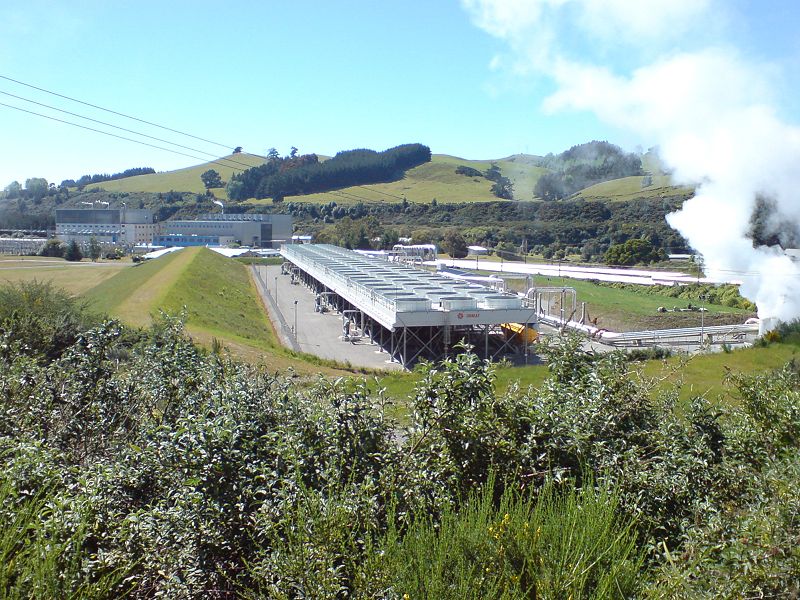Geothermal increasingly important to New Zealand

Geothermal energy could be generating 20 per cent of New Zealand’s electricity by 2012.
In a very informative article from New Zealand it is said that “Geothermal energy is becoming increasingly important to the country. New Zealand now obtains 10 per cent of its electricity from geothermal fields, and that is set to rise. Geothermal energy could be generating 20 per cent of New Zealand’s electricity by 2012.
According to the Ministry of Economic Development, New Zealand’s available geothermal resource base is 2600 MW of electrical equivalent, or about 75 per cent of the country’s peak demand. Only about 15 per cent of the maximum potential resource has been developed.
The country is not the largest user of geothermal energy, however. According to the International Geothermal Association (IGA), in 2005, the largest user was the US, with a total of more than 2500 MW of installed generating capacity. Next was the Philippines, with more than 1900 MW. The figure for New Zealand was 430 MW. Iceland had about 300 MW of installed capacity.
According to Mark Taylor, a geothermal analyst in Washington, DC, US, high fossil fuel prices and concerns about global warming have jump-started the US geothermal industry, along with federal tax credits and state laws mandating the wider use of renewable energy.
Global investment in geothermal energy was about $3 billion in 2007, said Taylor. Although it is still a very small amount, compared with the $116 billion invested in wind and solar, it represents a 180 per cent increase over the 2006 investment, he said.
Cost-competitiveness of geothermal power
Geothermal energy costs 4c to 7c/kWh, said Taylor. That makes geothermal energy competitive with wind energy and significantly cheaper than solar energy. He said geothermal facilities occupy a small fraction of the space required for wind and solar farms. Also, the energy can be harnessed any time, irrespective of weather conditions. There is also the advantage of minimal greenhouse gas emissions.
Although New Zealand is not the largest user of geothermal energy, it is especially well placed to harness that resource, with its rich geothermal fields, and long experience in developing geothermal resources. New Zealand has developed a high level of expertize in geothermal development, and it has marketed this form of power in several countries, including the Philippines, Indonesia and Australia.
According to NZGA executive officer Brian R White, the reasons for the success of geothermal development in New Zealand are manifold: there are consentable geothermal resources available with more than 1200 MW capacity; the development of the more productive, higher temperature resources is commercially viable; the development can be done in stages which reduces risk; long-term relationships between landowners (including Maori Trusts) and developers is leading to resources access; and because geothermal energy has attractive features such as independence from weather, good baseload generation, low emissions and proximity to major load centres.
Renewables target boost geothermal potential: The development of geothermal energy will be boosted by the target of an additional 30 PJ (petajoules) of consumer energy from renewable resources by 2012, set by the New Zealand government through its National Energy Efficiency and Conservation Strategy.”
For the full article see link below.